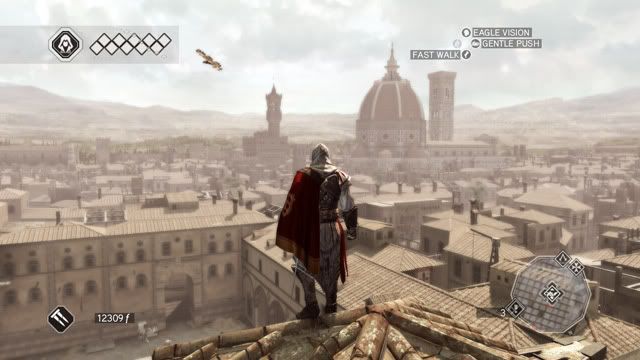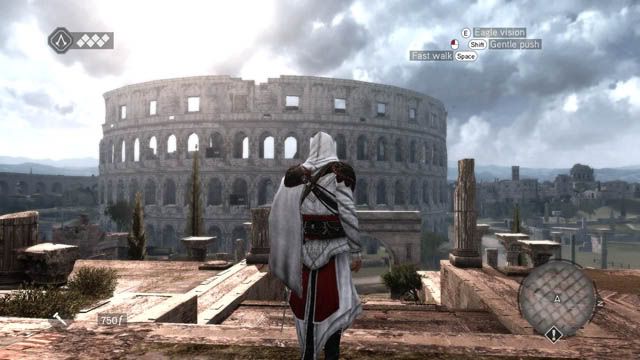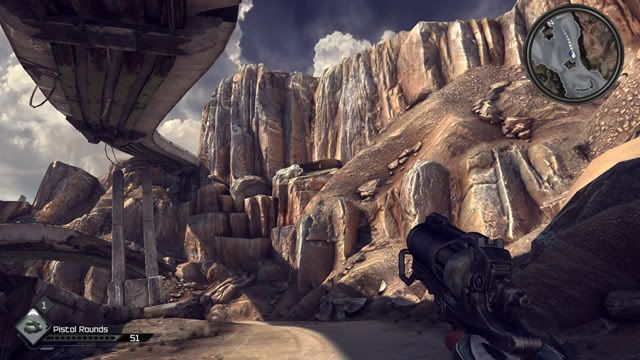The easiest place to start is Assassin’s Creed II, which takes place in Italy during the Renaissance. This in and of itself sets the stage for a game filled with art. The developers of the game created digital representations of Italian cities like Florence and Venice, taking special care in recreating these cities’ most famous and beautiful architectural works of art.
In the screenshot below, you can see the player standing on the rooftops of Florence, Italy, with the Basilica di Santa Maria del Fiore in the distance. I learned about the Basilica in an art appreciation class—how cool is it that I get to explore it while playing a video game?

© 2009 Ubisoft Entertainment
As another example, the next game in the franchise, Assassin’s Creed Brotherhood, takes place in Rome. In Brotherhood, you can explore famous structures such as the Coliseum (pictured) and the Pantheon.

© 2010 Ubisoft Entertainment
Some people may argue that Assassin’s Creed is not art, that it is simply a recreation of other people’s real art. I would argue that this game seamlessly integrates the Renaissance, and all the art that comes with it, into a fictional story, which results in a game being rich in art in so many ways that it would be silly to consider it as anything less. Not to mention that it instills a sense of art appreciation in its players, which cannot be said about practically any other game in existence. In this sense, Assassin's Creed is a franchise that is pivotal to the movement of games as art.


